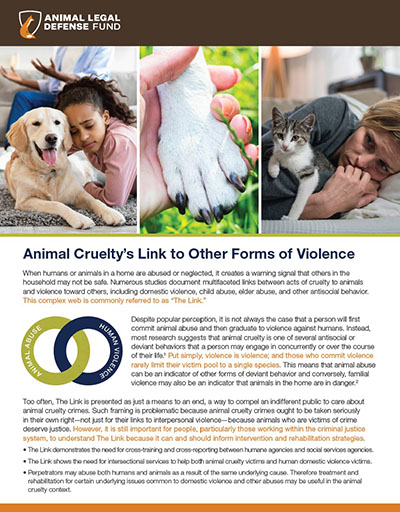Understanding the nexus between animal cruelty and interpersonal violence requires a profound examination of human behavior. It is often said that the treatment of animals reflects a person’s character. Delving into this connection reveals not only the grim realities of abuse but also the potential for predictive insights into future violent behaviors. This exploration, therefore, emphasizes the importance of recognizing animal cruelty not just as an isolated phenomenon, but as a significant indicator of broader societal issues.
At its core, the act of inflicting pain upon animals is devoid of empathy. The psychological profiles of individuals who engage in such behavior may offer valuable clues about their potential for committing violence against humans. Historical data consistently indicates that offenders with a history of animal abuse frequently possess similar tendencies towards violence against vulnerable populations, spanning from family members to acquaintances. This correlation raises urgent questions about the effectiveness of preventive measures and the need for interdisciplinary approaches in addressing violence.
Animal cruelty often emerges as a common observation, with countless cases reported across various communities. These acts can range from overt violence, such as beating, maiming, or torturing animals, to more covert forms, like neglect and abandonment. Initially perceived as aberrant behaviors, these actions might hint at deeper psychological turmoil within the perpetrators. Understanding their motivations may unlock a labyrinth of unresolved issues, including exposure to violence in childhood, untreated mental health conditions, or socio-economic stressors.
Empirical studies have demonstrated distinct patterns linking animal cruelty with human violence. For instance, individuals convicted of domestic violence frequently exhibit a documented history of animal abuse. This troubling trend is echoed in numerous criminal justice reports which suggest that early interventions targeting animal cruelty could serve as a vital preventive measure against future violent acts. By effectively addressing the roots of animal cruelty, society can mitigate the risk of broader societal violence.
The phenomenon is not limited to mere statistical correlations; it fundamentally speaks to the social and psychological constructs that shape human interactions. Those who harm animals may derive a sense of power, control, or gratification from their actions. Such dynamics often lay the groundwork for future aggression towards humans. This brute coercion reveals a startling truth: people who are desensitized to the suffering of animals may become increasingly indifferent to the suffering of their fellow human beings.
As we deepen our inquiry into this disturbing intersection, it becomes essential to explore societal perceptions of animal cruelty. In contemporary culture, a growing awareness of animal rights has sparked fervent debates surrounding ethical treatment. These discussions necessitate a broader consideration of how societal attitudes towards animals reflect and influence behaviors. Animals, often seen as extensions of the family or cherished members of society, act as mirrors reflecting our ethical dispositions.
Moreover, the investigation into animal cruelty’s implications extends beyond individual cases and captures cultural and systemic reflections of violence. Certain subcultures or environments may promote the normalization of cruelty—whether through media portrayal, rural practices, or urban neglect. In particular, factors such as familial lineage, educational opportunities, and communal standards critically shape an individual’s trajectory towards or away from violence.
Forensic psychology has increasingly emphasized the correlation between animal cruelty and criminal profiling. In the realm of criminal investigations, evidence of animal abuse can provide crucial insight into a suspect’s psychological landscape. Investigators are now trained to recognize these behaviors as part of a larger portrait when evaluating potential criminals. This linkage offers law enforcement a unique tool in their arsenal—enabling them to prioritize cases, understand offender motivations, and even predict future behaviors.
This recognition of how animal cruelty intertwines with violent tendencies opens new avenues for rehabilitation and intervention. Programs aimed at educating potential offenders about empathy, kindness, and the intrinsic value of life can not only foster better treatment of animals but may also disrupt a cycle of violence. Working with at-risk populations to underscore the importance of compassion can create a ripple effect, yielding positive changes in community dynamics.
Consequently, applying this knowledge extends beyond criminal profiling; it encroaches into the realms of public policy and social work. Collaborative efforts involving law enforcement, mental health professionals, and animal welfare organizations can develop comprehensive strategies to address the systemic issues associated with animal cruelty. By investing in educational initiatives, community outreach, and enhanced legal protections for animals, society can dismantle the deep-seated behaviors that facilitate a culture of violence.
Ultimately, the relationship between animal cruelty and violence against humans serves as a poignant reminder of the complexities of human behavior and societal structure. It beckons us to confront uncomfortable truths about humanity—how empathy, respect, and responsibility towards all living beings can profoundly transform societies. Understanding this link creates a foundation from which to advocate for the voiceless, ensuring that future generations are shaped by kindness rather than cruelty.
In conclusion, recognizing and addressing the link between animal cruelty and human violence is imperative not only for protecting animals but for fostering the mental health of individuals and the stability of communities. This comprehensive approach can yield a safer, more empathetic society—one where both human and animal lives are valued and safeguarded.








